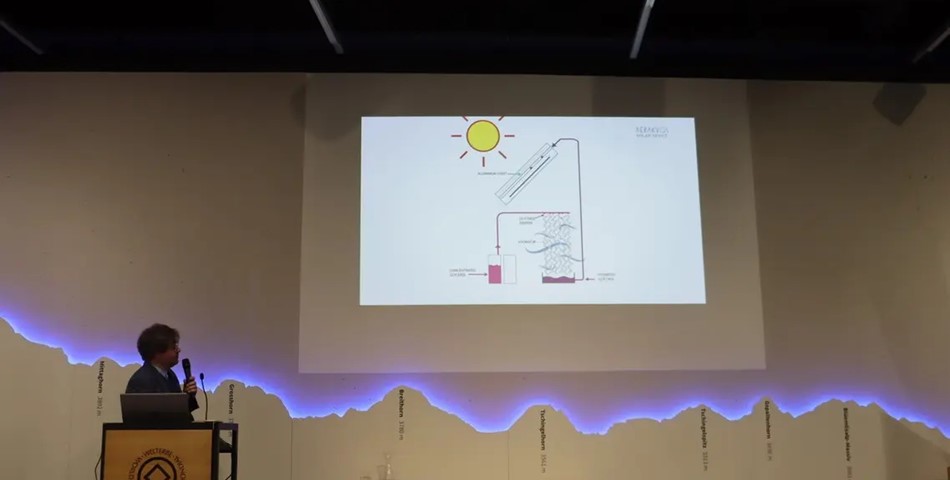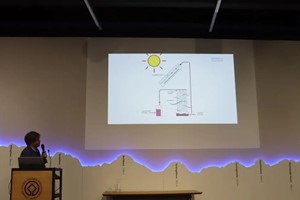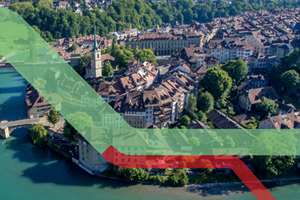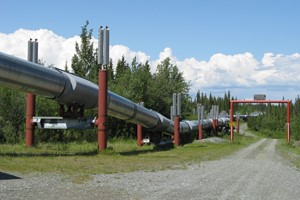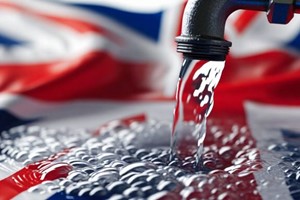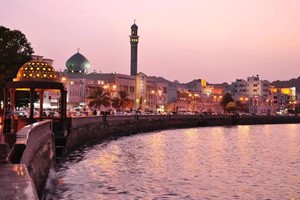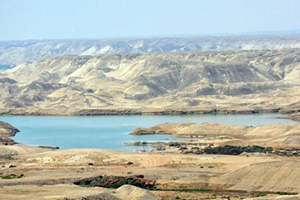Sustainable water management systems will become a severe priority soon, as water is already becoming a scarce resource worldwide.
The World Resources Institute identified thirty-three countries set to face extremely high-water stress by 2040, with fourteen in the Middle East, particularly the Arabian Peninsula.
The UAE’s Water Security Strategy 2036 plan aims to unify the water framework across the country and hopes to reduce water demand by 50 percent by 2050 by utilizing new water management technologies.
Swiss researchers and organizations have spent years looking into saving and reusing water to ensure a more sustainable path for this life-giving resource. Some of the Swiss technologies being pioneered are suitable to the climate and needs of the Middle East, where water security is an ongoing issue.
Swiss non-profit Sanakvo recently presented its patented technology at Switzerland’s World Nature Forum. Sanakvo’s system produces pure water from humid air - an abundant renewable commodity in places like the UAE and Sahara Desert.
“If you take one cubic kilometer of air, it corresponds to the amount of water in a 1-kilometer-long river 15 meters wide,” Sanakvo vice-president Monique Lehky Hagen told Al Arabiya English. “That means 15 million liters of water, sufficient water for 5 million people, depending on climate conditions.
“More than 98 percent of all technologies that have been developed in this field so far are based on cooling condensation methods, which are not viable for hot climates because you need a lot of energy to cool down the air, heavy compressors, refrigerant solution, and a cleaning mechanism with ozone,” she added. “Our technology is in this remaining 1.3 percent, and there are only three projects going on in this percentage, using the wet desiccation method.”
The technological breakthrough occurred when Sanakvo began trialing the use of glycerol, a byproduct of the biofuel industry that is both safe to consume and has a high affinity for water-absorbing water molecules from the air. The technology was patented in 2012, which Hagen said is to ensure it was not bought out and remained available at low cost and low tech to those in need.
“This can be used when you have no water, making uninhabitable territories viable,” Hagen said. “In the Middle East, you could use it to combat desertification because our water has no minerals, and in a lot of desert regions, you have too many salts in the water [for agriculture].”
The system involves liquid glycerol running over an absorbing cloth structure, sucking water out of humid air. The hydrated glycerol is then collected and heated by sunlight or electrical sources to extract the water vapor. It is then passed through a semipermeable membrane on the cooler side of the system, resulting in pure water. The dehydrated glycerol can then be put back into the system to use again.
In some desert conditions, humidity is higher at night. Hydrated glycerol can be stored until daytime to use solar energy for the extraction process. The amount of water produced depends on if a solar or electrical system is used.
Each Sanakvo solar module produces one liter of water per day and is designed to be stacked together like solar panels to meet demand. The surface of an average parking lot would fit 48 modules, giving 48 liters of drinking water. Each module costs about $20, and instructions can be provided on making them locally.
A Sanakvo study based on the meteorological data of Dubai estimated that the electrical home models, requiring only 750 watts for extraction, can produce about 3850 liters of water annually, or 11 liters of water a day. A solar array of 100 x 100 meters would generate 42,500 liters of water a day in Dubai.
Sanakvo is now ready to begin production but is looking for partners to help rapid implementation.



